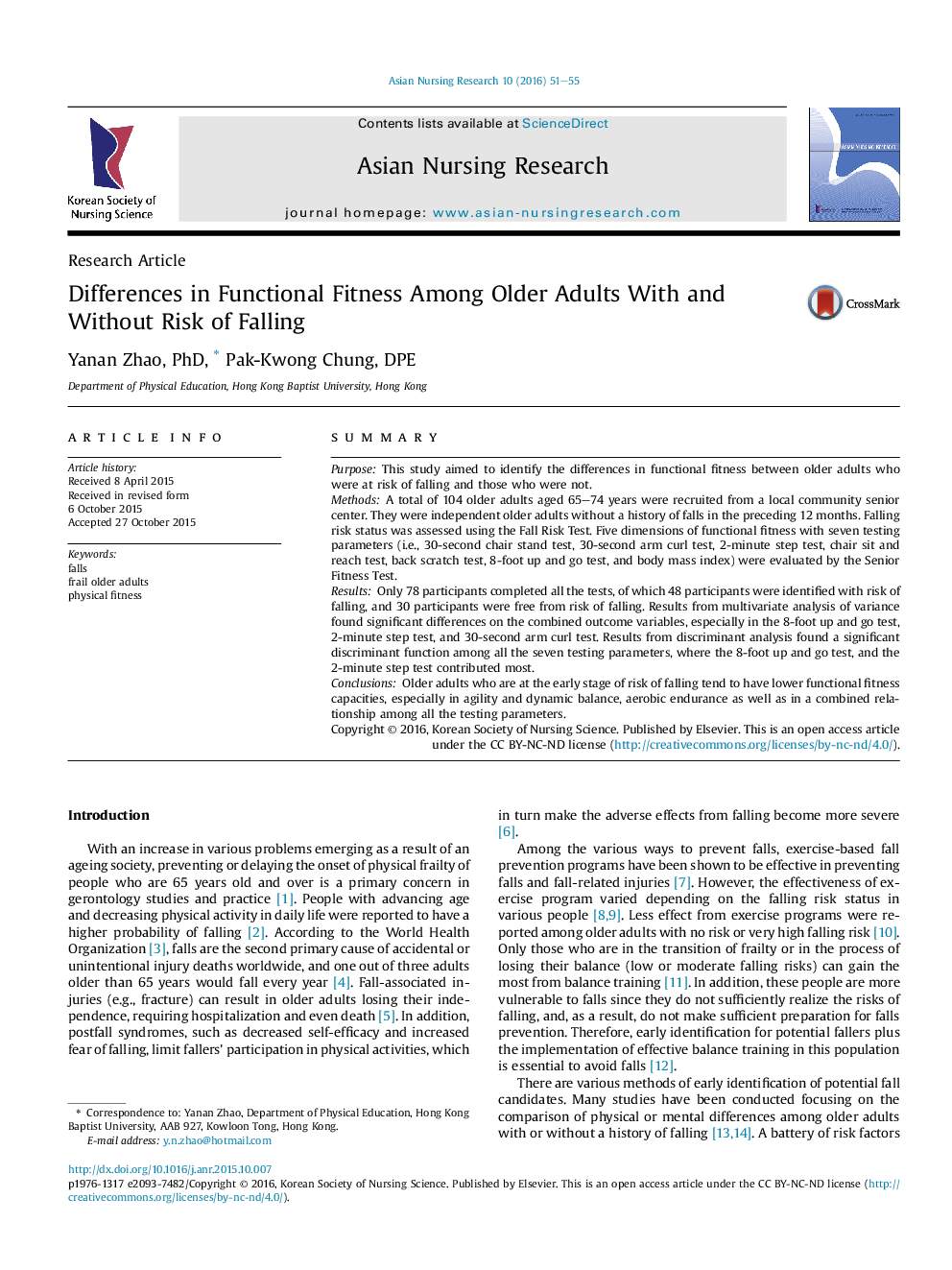| Article ID | Journal | Published Year | Pages | File Type |
|---|---|---|---|---|
| 2644912 | Asian Nursing Research | 2016 | 5 Pages |
SummaryPurposeThis study aimed to identify the differences in functional fitness between older adults who were at risk of falling and those who were not.MethodsA total of 104 older adults aged 65–74 years were recruited from a local community senior center. They were independent older adults without a history of falls in the preceding 12 months. Falling risk status was assessed using the Fall Risk Test. Five dimensions of functional fitness with seven testing parameters (i.e., 30-second chair stand test, 30-second arm curl test, 2-minute step test, chair sit and reach test, back scratch test, 8-foot up and go test, and body mass index) were evaluated by the Senior Fitness Test.ResultsOnly 78 participants completed all the tests, of which 48 participants were identified with risk of falling, and 30 participants were free from risk of falling. Results from multivariate analysis of variance found significant differences on the combined outcome variables, especially in the 8-foot up and go test, 2-minute step test, and 30-second arm curl test. Results from discriminant analysis found a significant discriminant function among all the seven testing parameters, where the 8-foot up and go test, and the 2-minute step test contributed most.ConclusionsOlder adults who are at the early stage of risk of falling tend to have lower functional fitness capacities, especially in agility and dynamic balance, aerobic endurance as well as in a combined relationship among all the testing parameters.
